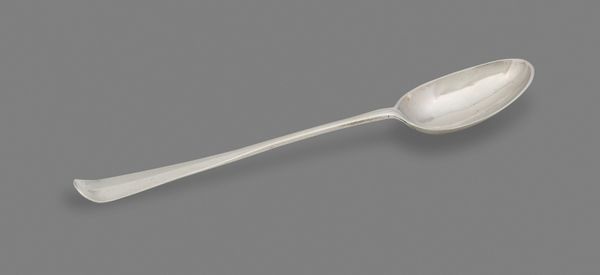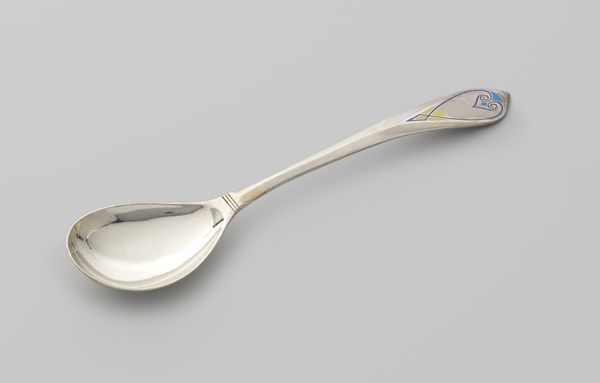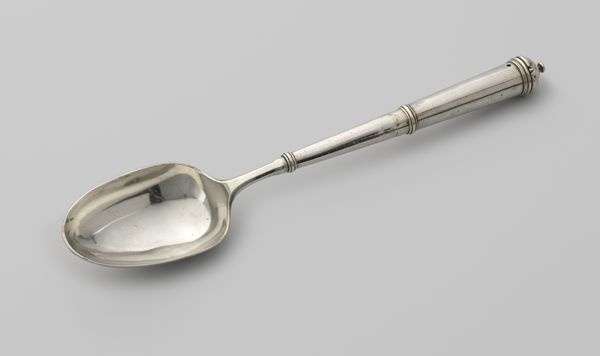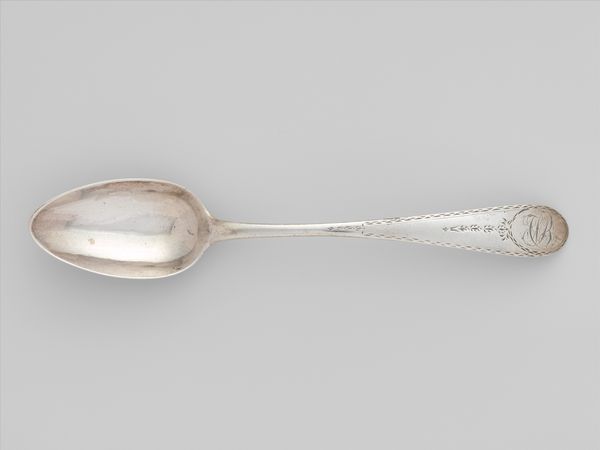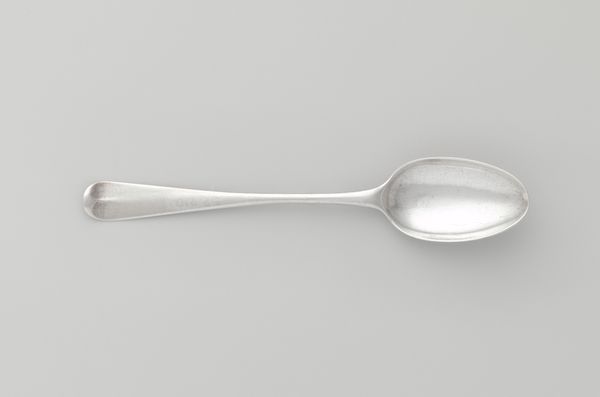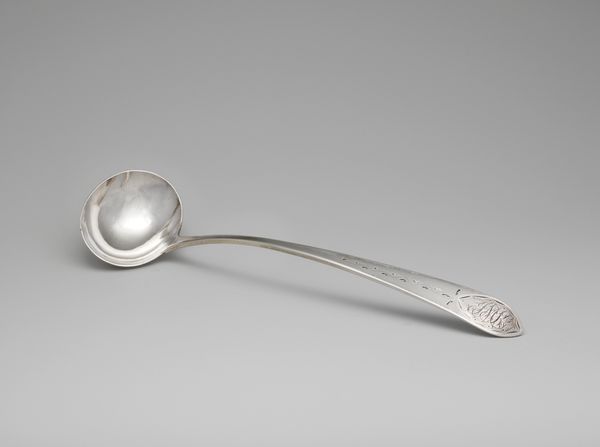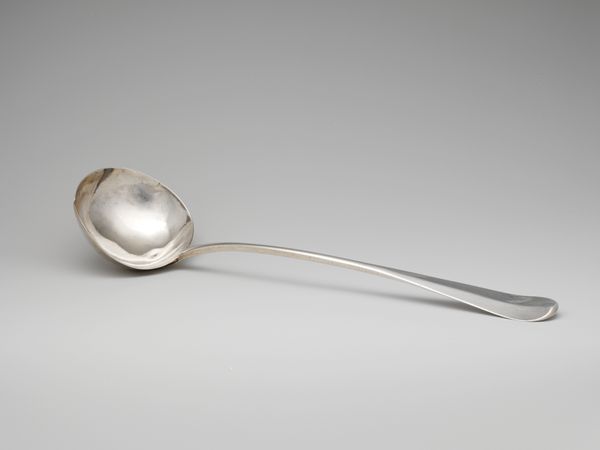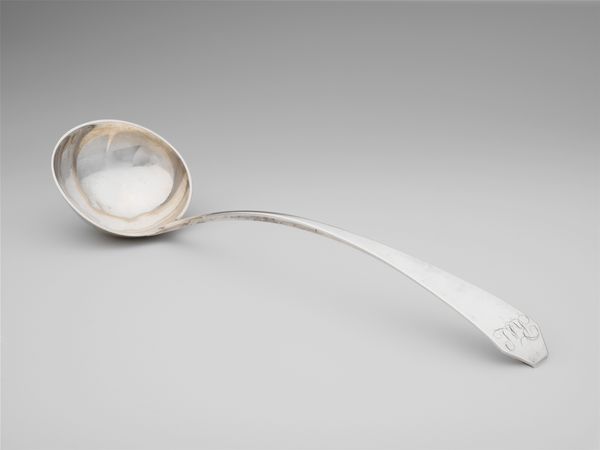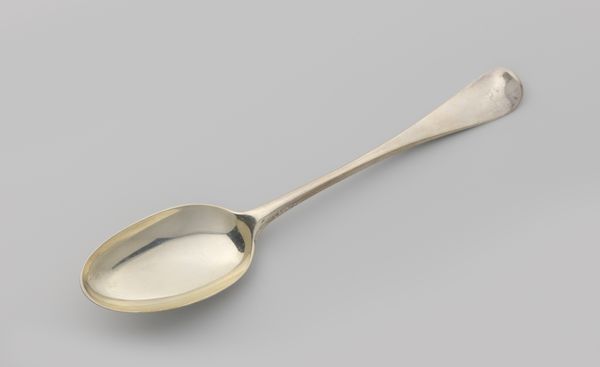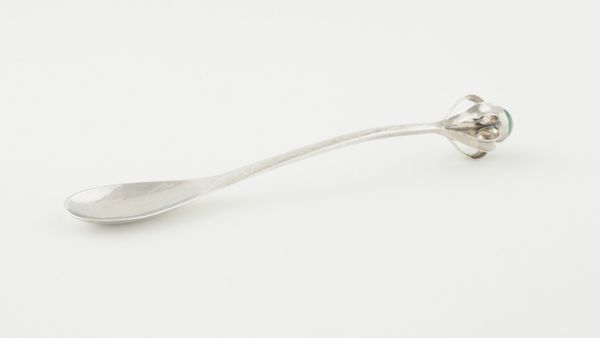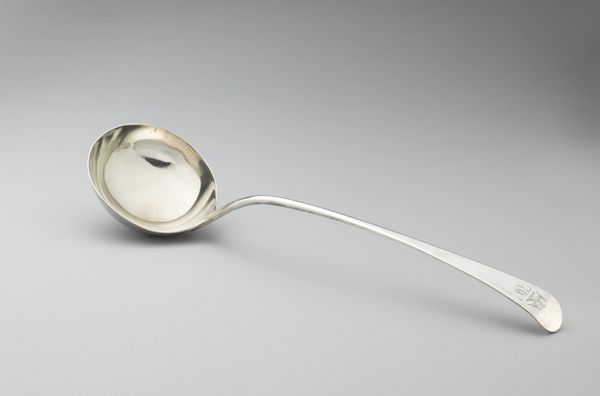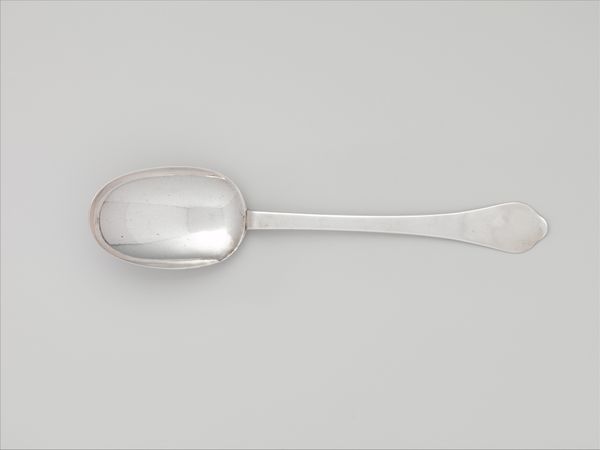
Dimensions: 5.4 × 37.8 × 8.3 cm (2 1/8 × 14 7/8 × 3 5/16 in.)
Copyright: Public Domain
Curator: This elegant object is a silver ladle, crafted by William Hollingshead sometime between 1757 and 1767. It’s currently held here at the Art Institute of Chicago. Editor: It’s quite striking! The simplicity is what gets me first. One might not expect a Baroque object to feel so restrained. Curator: Indeed, the restrained design speaks volumes. Hollingshead was working in a specific social context, and silver objects like these played a critical role in displays of wealth and status. The materiality itself – the choice of silver, its gleam, the labor required to work it – conveys power. Editor: And the historical implications of such a piece! Think of the hands that have held this ladle, the meals it has served. It's a tangible link to the 18th century. It reminds me of the growing merchant class and its ambitions during that era, shaping the urban landscape we now inherit. How was this level of refinement received back then? Curator: Silver was an investment and an advertisement. Ownership implied access to both raw materials and skilled labor. Furthermore, we shouldn't divorce an object like this from the exploitation it embodies; its creation required significant extraction of resources from the earth and likely depended on unjust labor systems. Editor: That's a valid point. The aesthetic refinement can obscure the complex web of labor. Looking at it in terms of institutional display, one wonders about its function. What kind of story does a museum tell by exhibiting a utilitarian object divorced from its everyday use, thus elevating it to 'art'? Curator: Excellent questions. Display always informs the perceived value. Museums often decontextualize functional items and thereby can unwittingly validate hierarchies of material wealth and labor practices. Editor: So true! The act of viewing itself has become so loaded. This ladle serves as a fascinating artifact, and the questions it prompts extend far beyond its purely aesthetic qualities. Curator: I concur. Examining pieces such as this prompts deeper questioning regarding value, display, and the complex circumstances behind the creation and usage of everyday, but carefully considered, items.
Comments
No comments
Be the first to comment and join the conversation on the ultimate creative platform.
